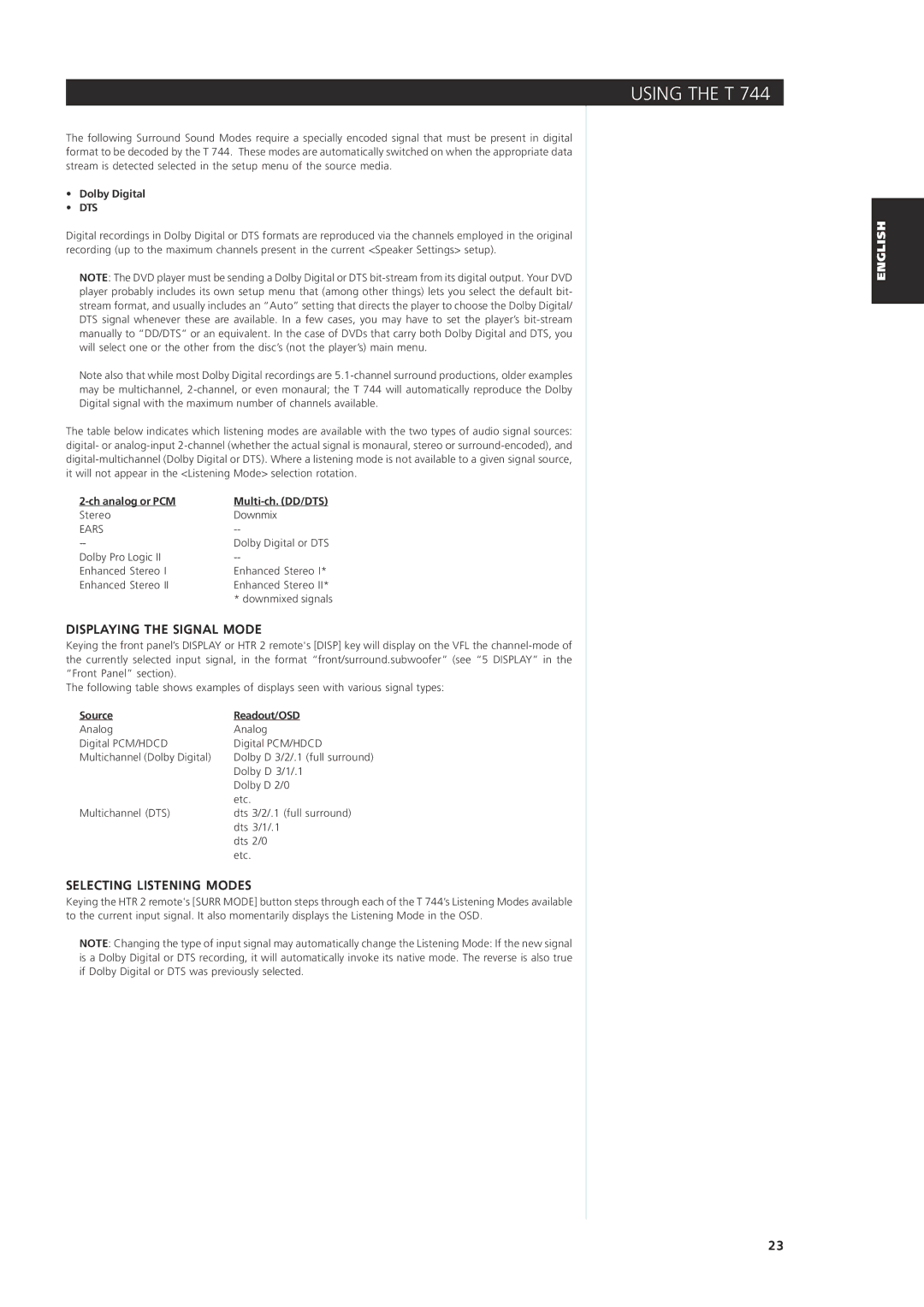T744 specifications
The NAD T744 is a versatile AV receiver that stands out for its powerful performance and user-friendly features. Designed for both home theater enthusiasts and casual listeners, the T744 delivers high-quality audio and video transmission, making it a compelling addition to any multimedia setup.One of the T744’s main features is its robust audio processing capabilities. It supports a variety of surround sound formats, including Dolby Digital and DTS, allowing for immersive audio experiences. With its 7.1 channel amplification, this receiver can drive multiple speakers, creating a dynamic soundstage that enhances movie nights, music listening, and gaming sessions alike.
The T744 integrates several advanced technologies that contribute to its impressive performance. One notable technology is NAD's proprietary PowerDrive, which ensures the receiver can deliver high output power with low distortion, resulting in clear, controlled audio even at high volumes. This feature is particularly beneficial for those who enjoy watching action-packed movies or listening to high-energy music.
Another significant characteristic of the NAD T744 is its intuitive user interface. The receiver is equipped with a user-friendly remote control and an on-screen display that simplifies setup and operation. Users can easily navigate through various inputs and settings, allowing for seamless transitions between different media sources. The T744 also includes multiple HDMI inputs, making it compatible with modern devices such as Blu-ray players, gaming consoles, and streaming devices.
In addition to its audio and video capabilities, the T744 also supports multi-room audio functionality. This means users can connect additional amplifiers or speakers throughout their home, allowing for synchronized playback in different areas. This feature is perfect for those who want to enjoy their favorite music throughout their home without needing to switch systems.
Overall, the NAD T744 combines high-performance audio technology with practical features, making it an excellent choice for anyone looking to enhance their home entertainment experience. Its combination of power, flexibility, and ease of use ensures that it caters to a wide range of audio-visual needs, making it a standout option in the AV receiver market.

